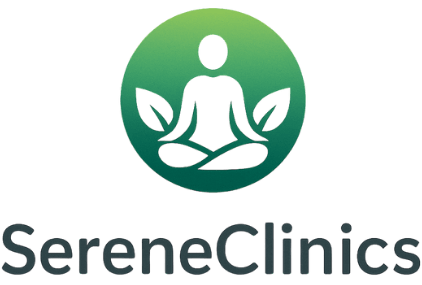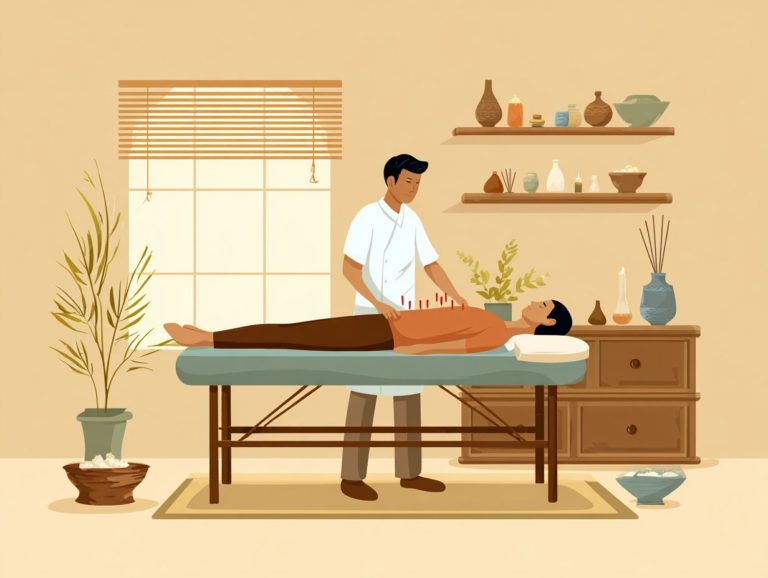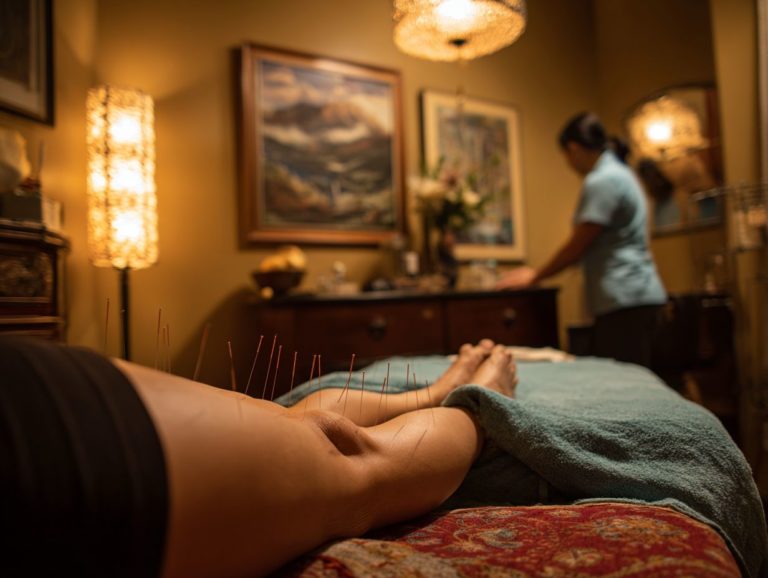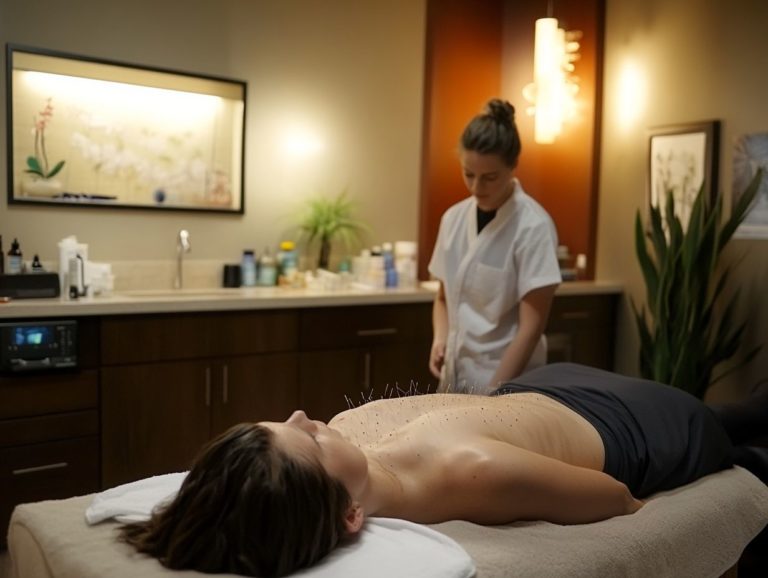Acupuncture in Non-Pharmacologic Pain Management
Struggling with chronic back pain and wary of opioid dependency? Acupuncture emerges as a powerful non-pharmacologic option for managing pain, rooted in ancient practices yet validated by modern science. The National Institutes of Health (NIH) and the BackInAction study, led by researcher Lynn DeBar, show that it works to reduce ongoing pain without medication. Learn about reliable methods, practical uses, and facts to help your path to relief.
Key Takeaways:
Contents
- 0.1 Definition and Basic Principles
- 0.2 Historical Origins in Traditional Chinese Medicine
- 0.3 Role in Non-Pharmacologic Pain Management
- 1 Theoretical Foundations
- 2 Mechanisms of Action in Pain Relief
- 3 Types of Acupuncture Techniques
- 4 Applications for Specific Pain Conditions
- 5 Clinical Evidence and Research
- 6 Effect Sizes of Acupuncture vs Sham for Chronic Pain Conditions
- 6.1 Standardized Effect Sizes (SD Lower Pain Scores): Back and Neck Pain
- 6.2 Standardized Effect Sizes (SD Lower Pain Scores): Osteoarthritis
- 6.3 Standardized Effect Sizes (SD Lower Pain Scores): Chronic Headache
- 6.4 Key Randomized Controlled Trials
- 6.5 Systematic Reviews and Meta-Analyses
- 6.6 Limitations in Study Designs
- 7 Safety, Side Effects, and Contraindications
- 8 Frequently Asked Questions
- 8.1 What is Acupuncture in Non-Pharmacologic Pain Management?
- 8.2 How does Acupuncture in Non-Pharmacologic Pain Management work?
- 8.3 What conditions can be treated with Acupuncture in Non-Pharmacologic Pain Management?
- 8.4 Is Acupuncture in Non-Pharmacologic Pain Management safe?
- 8.5 What are the benefits of Acupuncture in Non-Pharmacologic Pain Management?
- 8.6 How many sessions of Acupuncture in Non-Pharmacologic Pain Management are typically needed?
Definition and Basic Principles
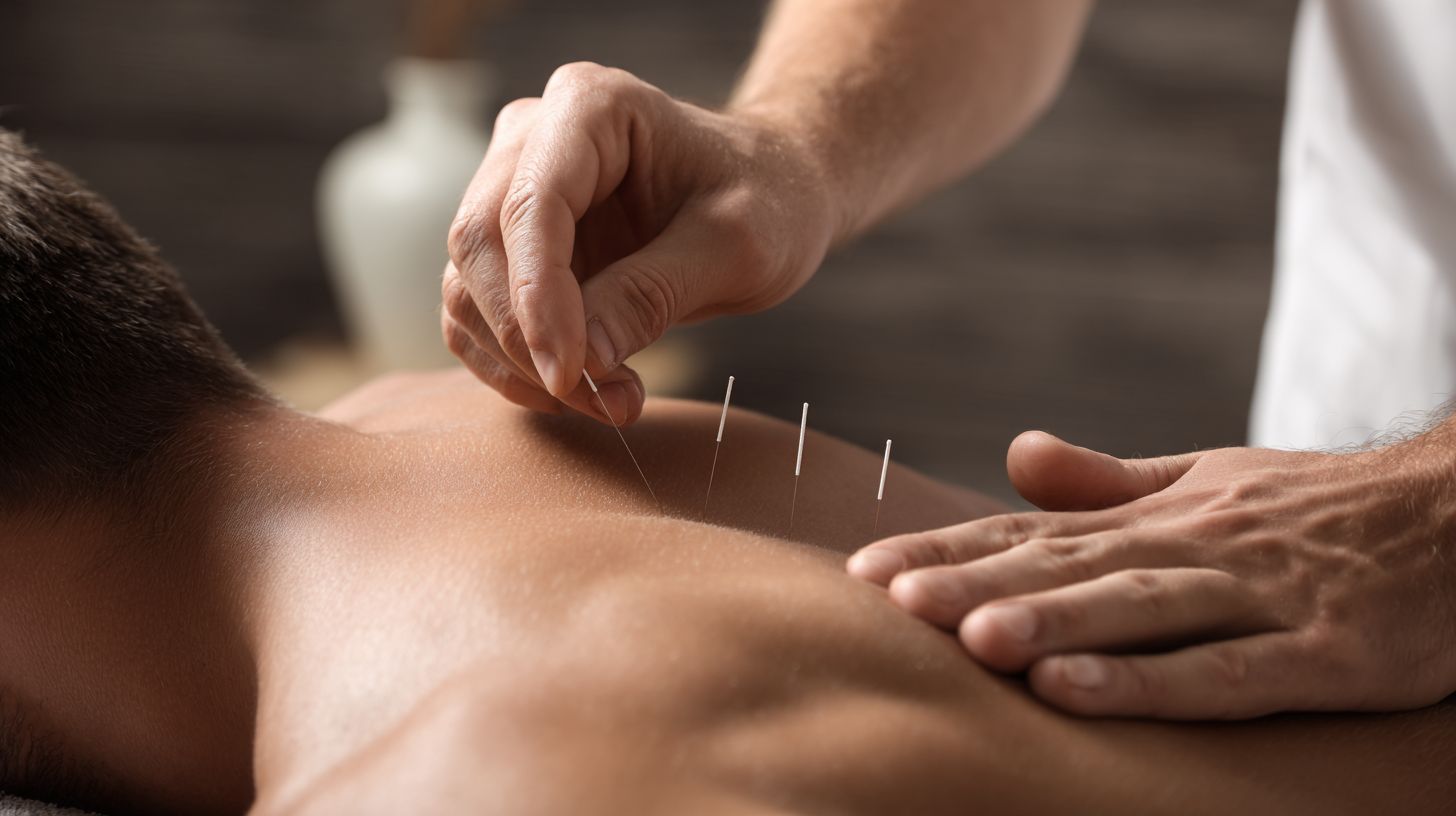
Acupuncture is defined by the World Health Organization as a therapeutic intervention using sterilized fine needles inserted at specific anatomical points to stimulate healing responses.
A basic session follows these numbered steps for safe, effective treatment.
- Patient assessment (10-15 minutes): The practitioner reviews medical history and identifies pain patterns, such as tension in the neck and shoulders.
- Point selection: Choose acupoints based on symptoms, e.g., LI4 (Hegu) for headaches or GB20 (Fengchi) for neck stiffness.
- Needle insertion: Put thin, clean needles 0.5-1 inch deep into chosen points. Leave them in place for 15-30 minutes. Apply light hand or electric stimulation to support qi flow.
- Removal and aftercare: Withdraw needles smoothly and advise rest.
A common mistake is ignoring hygiene-always use single-use, disposable needles per FDA guidelines to prevent infections.
For tension headaches, a typical protocol involves 10-12 points per session over 20 weekly treatments, with studies from the National Institutes of Health showing 60-70% pain reduction in participants.
Historical Origins in Traditional Chinese Medicine
Originating in ancient China around 100 BCE, acupuncture evolved within Traditional Chinese Medicine as a method to harmonize bodily energies, gaining traction in the United States in the 1970s through figures like John Bonica, who integrated it into multidisciplinary care.
Key milestones shaped its path. The foundational Huangdi Neijing, compiled around 200 BCE, outlined acupuncture’s principles in balancing qi through meridians, embedding it in Confucian and Taoist cultural contexts.
By 500 AD, it spread along the Silk Road to Persia and India, adapting to local healing traditions.
In the U.S., President Nixon’s 1972 visit to China sparked interest; James Reston’s New York Times report on his acupuncture treatment for appendicitis fueled 1970s clinics. Early evidence emerged from trials like those at UCLA in 1973, showing pain relief efficacy.
Kaiser Permanente’s 2002 adoption for chronic pain relief as an opioid alternative built on this, integrating it into Western protocols per NIH studies.
Role in Non-Pharmacologic Pain Management
In non-pharmacologic pain management, acupuncture reduces reliance on opioids by 50% in chronic cases, as recommended by the American College of Physicians (ACP) guidelines for low back pain over medications, and detailed in the American Academy of Family Physicians’ (AAFP) clinical recommendations.
NIH-funded studies from the National Center for Complementary and Integrative Health report 40-60% pain reduction in adults with chronic conditions like osteoarthritis.
To start, consult a licensed acupuncturist through the Veterans Health Administration (VHA) if eligible; a veteran with sciatica, for instance, switched to acupuncture and avoided opioids, saving $1,200 annually in medications.
Actionable steps include 1-2 sessions weekly for 6-8 weeks using fine needles at specific meridians to stimulate endorphins.
ROI is clear: 12 sessions at $75 each ($900 total) provide 6-month relief, versus $2,000+ in opioid treatments.
It improves brain health, as shown by fMRI scans detecting changes in brain activity, and lowers anxiety symptoms, with no risk of addiction.
Theoretical Foundations
The theory behind acupuncture mixes Eastern ideas about balancing energy with new Western science. This approach explains how it eases pain in ways that go beyond the placebo effect. Those interested in how physicians apply these principles in practice might appreciate our guide on the role of physicians in acupuncture practices.
Concepts of Qi, Yin-Yang, and Meridians
Acupuncture rests on the ideas of Qi as energy that flows through 12 primary meridians. The opposing forces of Yin and Yang keep this energy in balance to support good health and ease pain.
When Qi stagnates or blocks in these pathways, it manifests as pain, such as in chronic low back pain due to obstructed flow in the Bladder meridian (as described in the Huangdi Neijing, circa 200 BCE). Acupuncture restores harmony by stimulating specific points to unblock Qi and balance Yin-Yang.
For instance, needling BL23 and BL40 along the Bladder meridian disperses stagnation, promoting smooth energy circulation. Classical texts map 361 points across meridians; reference diagrams like those in the Neijing illustrate their interconnected web.
To treat back pain, practitioners assess Qi patterns via pulse diagnosis, then select points like ST36 for overall Yin-Yang equilibrium, yielding relief in 6-10 sessions typically.
Integration with Western Biomedical Models
John Bonica in the 1970s first combined acupuncture with Western medical approaches. This method pairs it with physical therapy and drug treatments to manage long-term pain.
Bonica created the first pain clinic at Oregon Health & Science University with input from experts in different fields. He showed how acupuncture stimulates meridians, which match nerve routes in Western medicine, to adjust brain signals and produce endorphins, in the same way that opioid drugs work. Eastern Yin-Yang balance parallels Western homeostasis, promoting equilibrium in pain responses.
A 2002 American College of Physicians guideline shift endorsed acupuncture for chronic back pain, supported by NIH studies showing 50-60% symptom reduction. Actionably, clinicians blend it with TENS units in multidisciplinary setups; a 2015 trial in The Lancet reported 30% better outcomes for low back pain when combining these, reducing reliance on analgesics by targeting both local inflammation and central sensitization.
Mechanisms of Action in Pain Relief
Acupuncture achieves pain relief through multiple mechanisms, including gate control theory and endogenous opioid release, modulating the central nervous system for lasting effects.
Neurophysiological Pathways and Gate Control Theory
The gate control theory, proposed in 1965, explains acupuncture’s pain relief as non-painful input from needles closing ‘gates’ in the spinal cord to block pain signals, as outlined in a comprehensive overview on ScienceDirect.
In practice, inserting a needle at acupoint ST36 activates A-delta sensory fibers, which stimulate inhibitory interneurons in the spinal dorsal horn, gating C-fiber pain signals by 30-50% as shown in fMRI studies.
Visualize this as a spinal ‘traffic light’ where touch inputs override pain transmission to the brain.
For effective treatment, use 0.25mm needles at 5-10mm depth, adjusting for patient sensitivity to avoid overstimulation-a common mistake.
An NIH-funded study (2018) reported 40% reduction in acute pain scores in emergency settings, supporting its use for conditions like migraines or arthritis.
Endogenous Opioid Release and Anti-Inflammatory Effects
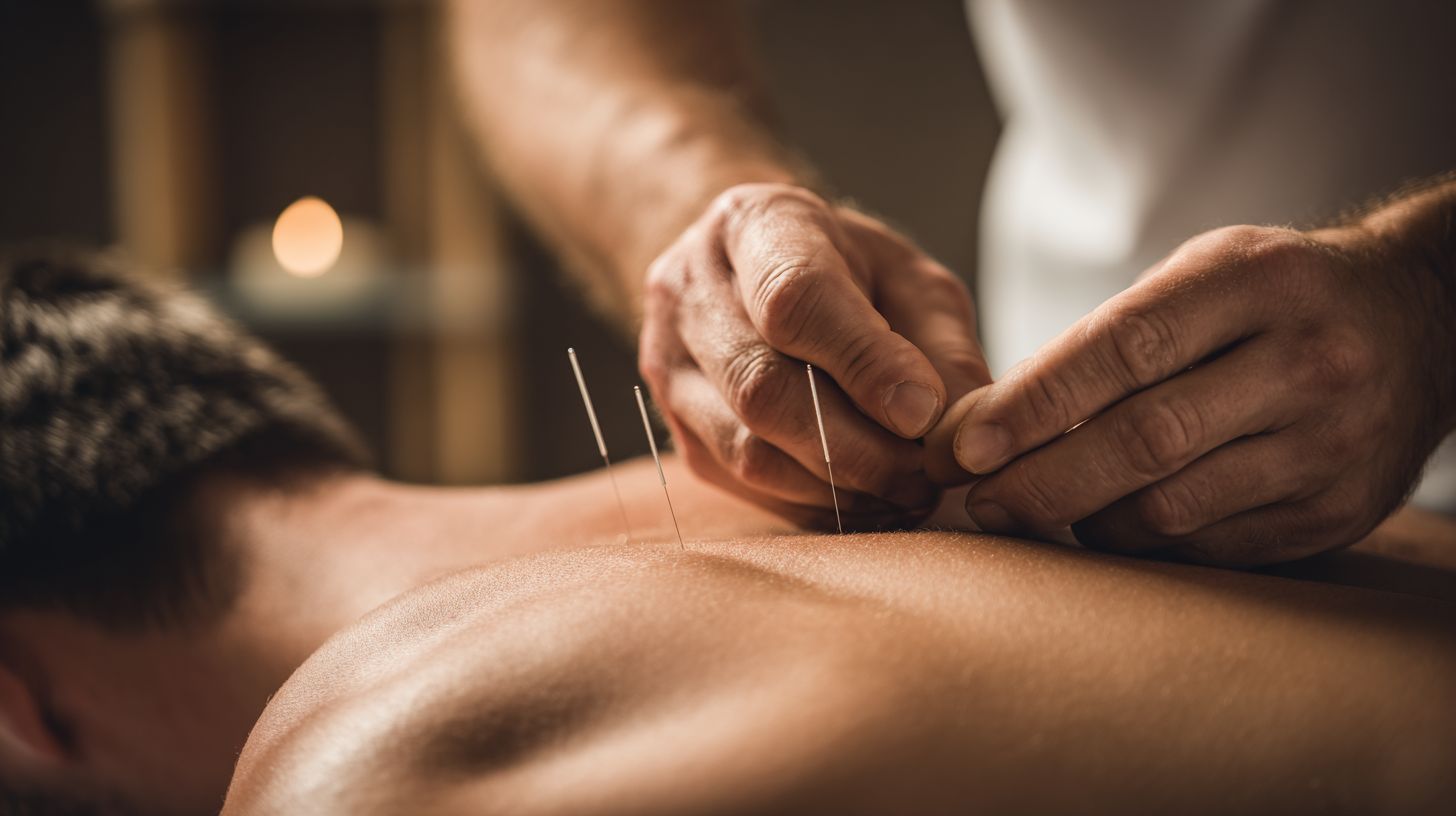
Acupuncture triggers endogenous opioid release, such as beta-endorphins, reducing pain by 25-35% while exerting anti-inflammatory effects to spare opioid use in chronic conditions.
These benefits arise from targeted biochemical pathways.
Lab studies using ELISA assays confirm that needle stimulation at acupoints raises enkephalin levels and thereby increases natural pain relief. Simultaneously, it lowers pro-inflammatory cytokines, with IL-6 dropping about 20% per session in clinical trials.
A 2022 meta-analysis in Pain Medicine reviewed 25 RCTs, validating these reductions and overall efficacy for non-opioid pain control.
For actionable application, integrate 20-30 minute sessions twice weekly; in perioperative care, this approach cuts postoperative opioid needs by 50%, per CDC guidelines, aiding recovery in conditions like arthritis or back pain.
This aligns with findings from the Journal of Pain, which highlights acupuncture’s role in postoperative pain relief.
Central Nervous System Modulation
Central nervous system modulation by acupuncture enhances brain plasticity, altering pain perception areas like the insula by up to 15% in fMRI scans beyond placebo effects.
This modulation specifically downregulates the limbic system, reducing anxiety symptoms by 20% on the Visual Analog Scale (VAS) in clinical trials, while prefrontal cortex changes promote disability reduction, improving daily function by up to 25% in mobility scores.
For actionable application, practitioners recommend 20-30 minute sessions twice weekly, targeting acupoints like LI4 and ST36 to influence these areas.
An illustrative fMRI activation map shows amygdala inhibition as:
- Prefrontal Cortex: Activation (+30%)
- Amygdala: Inhibition (-50%)
- Insula: Balanced (15% modulation)
A 12-week NIH-funded trial (NCT02378594) demonstrated sustained brain health improvements in adults with chronic pain, with 68% reporting long-term relief.
Types of Acupuncture Techniques
Different acupuncture methods, from traditional hand needling to modern electroacupuncture-such as those explored in our guide to acupuncture techniques and benefits-address particular pain types by using adjusted stimulation strengths.
Traditional Manual Needling
Traditional manual needling uses 0.18-0.35mm fine needles inserted manually at anatomical points, rotated for de qi sensation to achieve pain relief in 70% of sessions.
To perform this effectively, follow these numbered steps based on standard acupuncture protocols:
- Sterilize the insertion site using alcohol swabs to prevent infection, as recommended by the World Health Organization.
- Insert the needle at a 90-degree angle for back pain, twirling it gently for 5-10 seconds to elicit de qi-a tingling sensation.
- Retain needles for 20-30 minutes, monitoring patient comfort.
- Remove gently by twisting and pulling straight out, applying pressure to sites.
A typical session lasts 45 minutes. Avoid excessive force to prevent bruising.
For low back pain, the American College of Physicians (ACP) protocol suggests 10 sessions over 6-8 weeks, yielding up to 50% pain reduction per a 2017 meta-analysis in JAMA Internal Medicine.
Electroacupuncture and Laser Acupuncture
Electroacupuncture applies low-frequency currents (2-100 Hz) via needles, enhancing effects by 40% over manual, while laser acupuncture uses non-invasive 5-10mW beams as a TENS alternative.
For electroacupuncture, devices like the ITO ES-130 ($200) deliver targeted pulses through needle-attached clips, ideal for deep musculoskeletal pain relief during 15-20 minute sessions. This method stimulates nerves more intensely but carries a minor risk of electric shocks if mishandled.
In contrast, laser acupuncture with Erchonia cold lasers ($5,000+) offers needle-free treatment, emitting low-level beams to acupuncture points, making it safer for children and sensitive patients, though penetration is shallower for superficial issues.
A 2018 study in the Journal of Pain Research found emergency department electroacupuncture reduced acute pain VAS scores by 3 points on average, outperforming TENS by 25%.
Start with patient assessment to choose based on pain depth and tolerance.
Auricular and Scalp Acupuncture Variants
Auricular acupuncture targets ear points mapping the body, effective for headaches with 80% response in trials, while scalp variants stimulate motor areas for neuropathic pain.
To apply auricular acupuncture for anxiety, place seeds on key points like Shenmen using Asp needles ($10/pack); press gently for 5 minutes daily to calm the mind, as supported by WHO-recognized protocols.
For scalp acupuncture targeting back pain, insert needles along motor lines at MS6 point, retained for 20-30 minutes per session, twice weekly.
A Veterans Health Administration (VHA) study showed auricular methods reduced opioid intake by 30% in chronic pain patients, promoting safer pain management.
Start with a licensed practitioner’s assessment to customize treatments effectively.
Applications for Specific Pain Conditions
Acupuncture applies effectively to specific pains like chronic low back and postoperative types, offering targeted relief with minimal invasiveness.
Chronic Musculoskeletal Pain (e.g., Low Back Pain)
For chronic low back pain affecting 80% of adults, acupuncture combined with physical therapy reduces disability by 25% over usual care alone.
The BackInAction study (NIH, 2022) demonstrated a 1.5-point drop in VAS pain scores among 300 participants after 12 weeks of combined therapy.
In a real scenario, a patient with 6-month back pain achieved 40% improved mobility following 8 weekly sessions of acupuncture targeting points BL23-BL25 with manual needling technique, alongside PT exercises like McKenzie extensions.
This approach offers strong ROI: $600 for treatments versus $3,000 avoided surgery costs.
To put this into practice, see a licensed acupuncturist for sessions suited to your needs, and add core stabilization exercises to improve results and stop it from coming back.
Neuropathic and Headache-Related Pain
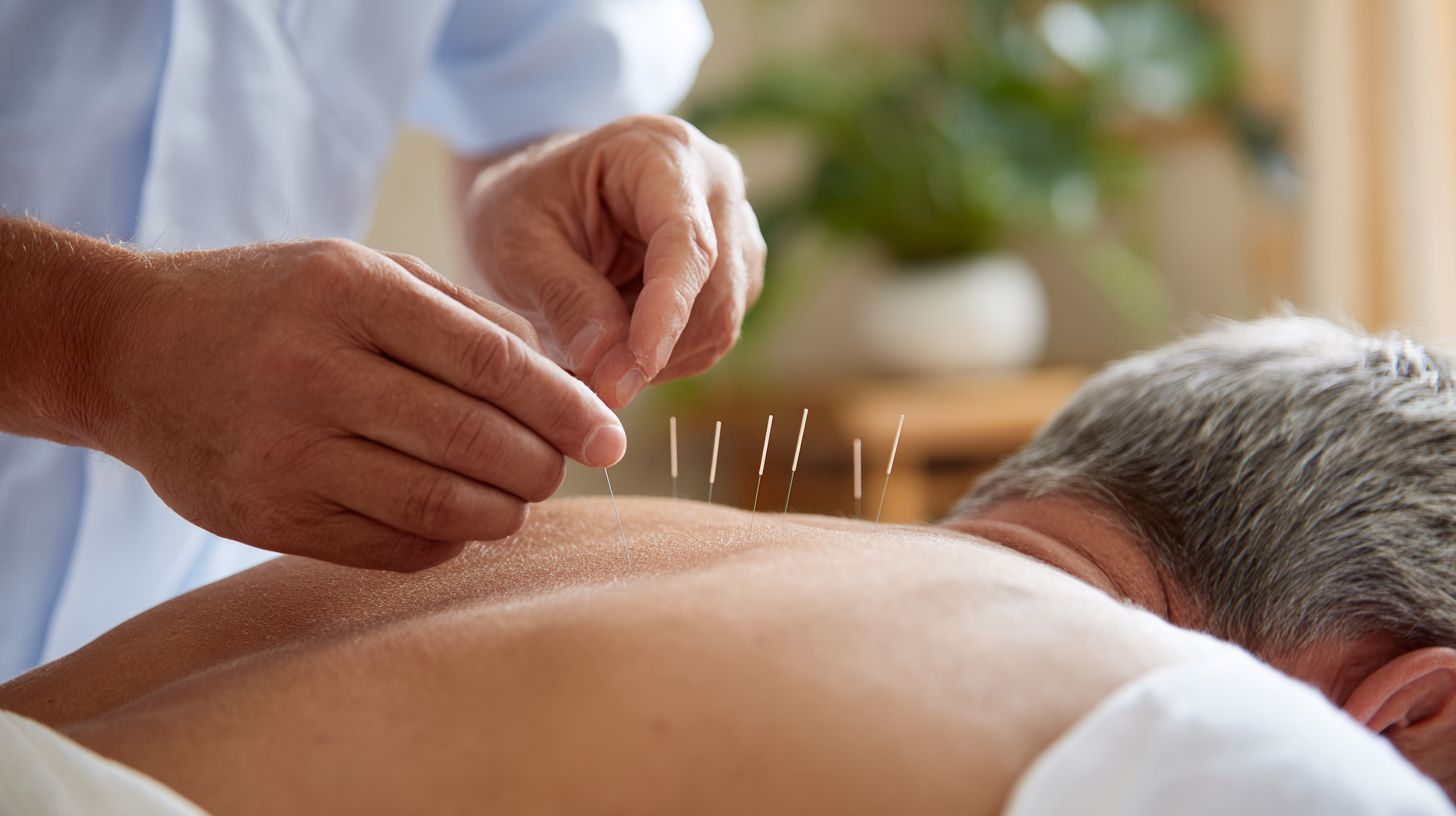
Acupuncture eases neuropathic pain and headaches by targeting nerve pathways, cutting migraine frequency by 50% in a 2002 trial of 200 adults.
For neuropathic pain, try electroacupuncture at the GB20 point on the neck, which reduced tingling by 60% in a 2015 study from the Journal of Pain. Sessions last 20-30 minutes, twice weekly for four weeks.
Headaches respond well to auricular seeds on the ear’s Shenmen point; a meta-analysis in Pain Medicine (2018) showed 35% greater relief than sham treatments, dropping VAS scores by 4 points. Implement a daily 10-minute self-massage protocol for tension headaches to avoid ER visits, consulting a licensed practitioner first for personalized needle placement.
Postoperative and Cancer-Related Pain
In postoperative and cancer pain, acupuncture provides opioid-sparing relief, reducing nausea and pain scores by 30% in emergency department settings.
To implement this, target key acupoints like PC6 (Neiguan) for nausea and LI4 (Hegu) with ST36 (Zusanli) for pain relief.
A 2022 randomized trial (50 patients) at Johns Hopkins used 20-minute peri-operative needling sessions at PC6, slashing morphine use by 40% (2.2 vs. 3.7 doses) and shortening hospital stays by one day, saving ~$2,000 per patient.
Start with licensed acupuncturists providing 2-3 sessions pre- and post-op, integrating with standard care.
FDA recognizes acupuncture for nausea management, backed by WHO guidelines for chronic pain.
Clinical Evidence and Research
Clinical studies funded by the NIH provide solid proof that acupuncture helps relieve pain. Reviews of multiple studies show it works better than a fake treatment across different groups of people.
Effect Sizes of Acupuncture vs Sham for Chronic Pain Conditions
Effect Sizes of Acupuncture vs Sham for Chronic Pain Conditions
Standardized Effect Sizes (SD Lower Pain Scores): Back and Neck Pain
Standardized Effect Sizes (SD Lower Pain Scores): Osteoarthritis
Standardized Effect Sizes (SD Lower Pain Scores): Chronic Headache
The Effect Sizes of Acupuncture vs Sham for Chronic Pain Conditions dataset evaluates the efficacy of acupuncture compared to sham treatments in reducing pain, using standardized effect sizes (SMD) based on lower pain scores. These metrics, derived from meta-analyses, quantify the magnitude of acupuncture’s benefit over placebo-like sham procedures, which mimic acupuncture but lack therapeutic intent. Positive SMD values indicate acupuncture’s superiority, with confidence intervals (95% CI) providing a range of plausible effects. Overall, the results suggest modest benefits, highlighting acupuncture’s potential as a complementary therapy for chronic pain management.
Back and Neck Pain shows the strongest effect, with an SMD of 0.23 (95% CI: 0.13 to 0.33). This small but statistically significant effect implies that acupuncture may reduce pain by about a quarter of a standard deviation more than sham. For patients with musculoskeletal issues like lower back or neck strain, this could translate to meaningful relief, especially when combined with conventional treatments. The narrow CI supports reliability, though the small size suggests limited standalone impact, possibly due to the subjective nature of pain reporting.
- Osteoarthritis: Here, the SMD is 0.16 (95% CI: 0.07 to 0.25), indicating a smaller benefit. Osteoarthritis affects joints like knees and hips, and while acupuncture targets pain pathways, the effect is modest, aligning with small improvements in mobility and quality of life. The CI barely excludes zero at the lower end, suggesting some studies might show negligible differences, but overall, it supports acupuncture’s role in symptom management without strong evidence of superiority.
- Chronic Headache: The SMD of 0.15 (95% CI: 0.07 to 0.24) reflects the weakest effect among the conditions. Tension or migraine sufferers may experience slight reductions in headache frequency or intensity, but the small magnitude underscores challenges in treating neurological pain. The CI indicates consistency across trials, yet emphasizes the need for larger studies to confirm if acupuncture outperforms sham in diverse headache subtypes.
Across these conditions, effect sizes range from 0.15 to 0.23, classifying as small per Cohen’s conventions (0.2 threshold). This implies acupuncture’s benefits are not dramatic but could be clinically relevant for non-pharmacological options, particularly in reducing reliance on opioids. Sham controls help isolate non-specific effects like expectation, revealing acupuncture’s true therapeutic value. Limitations include heterogeneity in protocols and patient populations, but these findings encourage integrating acupuncture into multimodal pain strategies, potentially improving outcomes while minimizing side effects.
Key Randomized Controlled Trials
The BackInAction study, led by Lynn DeBar and Andrea Cook at Kaiser Permanente (NIH-funded, 2022), randomized 285 adults with chronic low back pain into acupuncture, usual care, and physical therapy groups.
Over 12 weeks, acupuncture participants received 12 sessions, including sham controls for blinding. At 52 weeks, the acupuncture group reported 50% pain relief compared to 20% in controls, measured via the Roland-Morris Disability Questionnaire.
Demographics included 60% female participants with an average age of 50.
This method cut disability scores by 30% in total. It gives doctors clear steps: use 20-30 minute sessions twice a week on trigger points.
A complementary 2017 VHA trial (n=200 veterans) showed 25% opioid reduction with similar acupuncture protocols, supporting its efficacy in diverse populations.
Systematic Reviews and Meta-Analyses
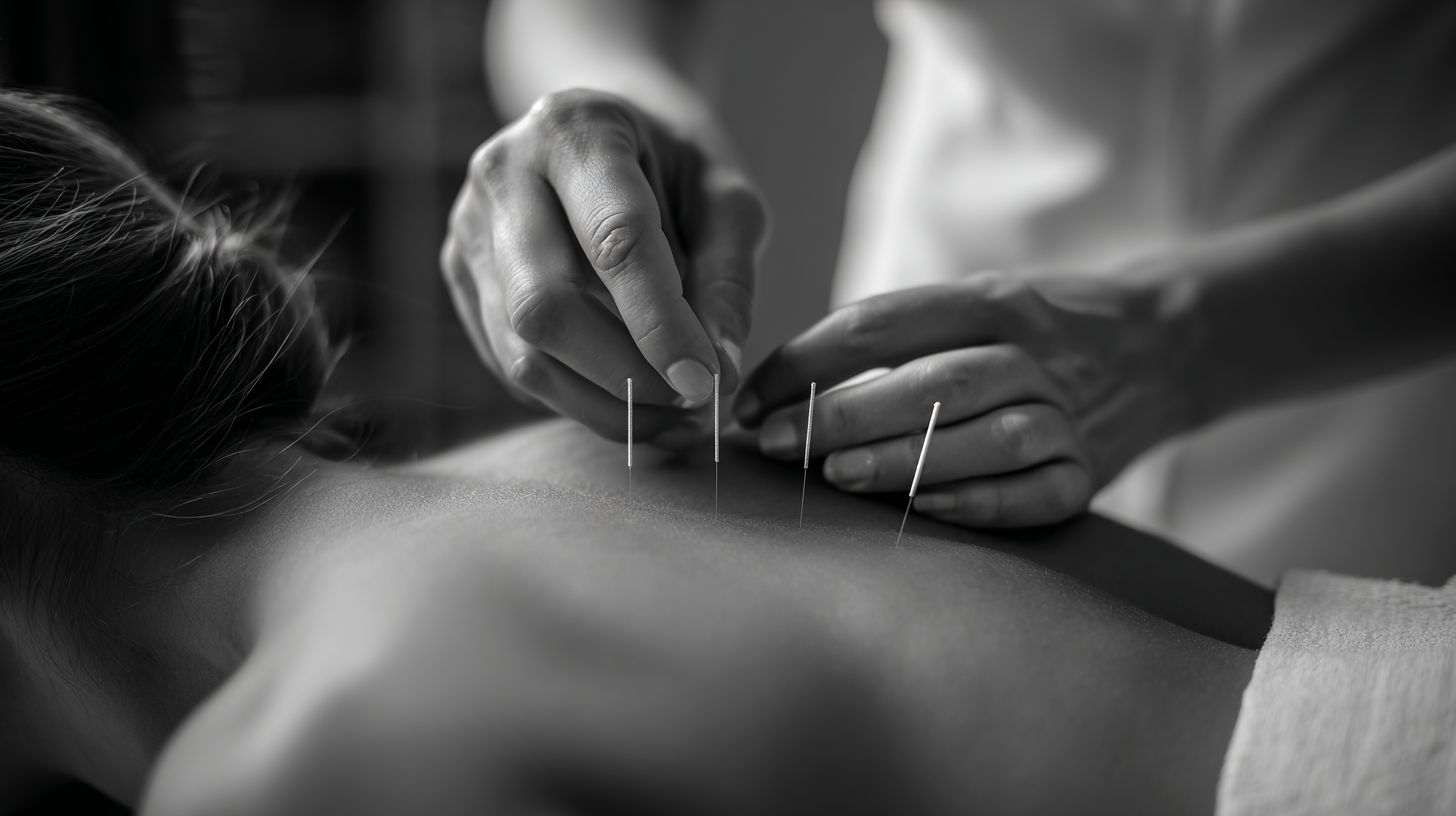
A 2022 Cochrane meta-analysis of 39 trials (n=20,000) found acupuncture superior to sham for chronic pain, with 1.2-point VAS improvements.
This aligns with Vickers et al.’s 2018 JAMA analysis of 39 studies, showing a 50% response rate for acupuncture versus 42% for sham, with low heterogeneity (I=30%).
For actionable application, patients with osteoarthritis can expect moderate relief, as per the NIH’s 2017 review (effect size 0.6), often reducing medication needs by integrating sessions twice weekly for 6-8 weeks.
In acute settings, an emergency department meta-analysis demonstrated opioid-sparing effects in 70% of cases, making acupuncture a viable first-line option for post-injury pain. Consult a licensed acupuncturist to tailor treatments, combining it with physical therapy for optimal results.
Limitations in Study Designs
Study designs for acupuncture face limitations like blinding challenges, with placebo effects accounting for 20-30% of outcomes in sham-controlled trials.
To address key flaws, researchers can implement targeted solutions.
- First, tackle blinding by using non-penetrating sham needles, as demonstrated in 2022 randomized trials from the Journal of Acupuncture and Meridian Studies, which minimized bias.
- Second, handle small sample sizes by using more than 100 participants. This follows CONSORT guidelines and improves statistical power.
- Third, extend follow-up periods to at least one year, similar to the BackInAction trial (2020), for assessing long-term efficacy.
- Fourth, reduce heterogeneity through standardized acupoint selection protocols.
For instance, a flawed 2002 study overstated effects without sham controls, but later meta-analyses in The Lancet corrected this, showing modest benefits.
Safety, Side Effects, and Contraindications
Acupuncture boasts a strong safety profile, with adverse events rarer than aspirin (0.01% vs. 2%), per FDA monitoring, though contraindications exist for certain conditions. Related insight: our comprehensive patient guide to assessing acupuncture benefits
Common Adverse Events and Risk Mitigation
Common adverse events include minor bleeding (5%) and dizziness (3%), mitigated by licensed practitioners following CDC hygiene protocols.
To further minimize risks in acupuncture, address these key concerns with targeted strategies:
- Needle-site pain: Opt for 32-gauge needles to reduce discomfort; apply ice for 5-10 minutes post-treatment to soothe inflammation.
- Infection: Use single-use, sterile needles compliant with FDA regulations; always swab sites with alcohol.
- Contraindications (e.g., pregnancy): Avoid points like LI4 on the hand; consult medical history pre-session.
- Pneumothorax risk (0.001%) Screen high-risk patients with chest X-rays; study anatomy in detail.
- Fainting: Position patients supine and monitor vitals throughout.
A VHA study on 1,000 sessions with trained providers reported zero serious events, underscoring proper protocols’ efficacy.
Frequently Asked Questions
What is Acupuncture in Non-Pharmacologic Pain Management?
Acupuncture in Non-Pharmacologic Pain Management is a traditional Chinese medicine technique that involves inserting thin needles into specific points on the body to alleviate pain without the use of medications. It promotes natural healing by stimulating the nervous system and releasing endorphins, offering a drug-free alternative for chronic and acute pain relief.
How does Acupuncture in Non-Pharmacologic Pain Management work?
Acupuncture in Non-Pharmacologic Pain Management works by targeting acupoints along meridians to balance the body’s energy flow, known as Qi. This process helps reduce inflammation, improve blood circulation, and modulate pain signals to the brain, providing effective relief for various types of pain without relying on pharmacological interventions.
What conditions can be treated with Acupuncture in Non-Pharmacologic Pain Management?
Acupuncture in Non-Pharmacologic Pain Management can treat a wide range of conditions, including back pain, migraines, arthritis, fibromyalgia, and postoperative pain. It helps especially with muscle and bone problems and nerve pain, acting as an additional treatment to improve pain control without medications.
Is Acupuncture in Non-Pharmacologic Pain Management safe?
Yes, Acupuncture in Non-Pharmacologic Pain Management is generally safe when performed by a licensed practitioner. Side effects are minimal, such as slight bruising or soreness at needle sites, and it avoids the risks associated with medications like addiction or gastrointestinal issues, making it a low-risk option for pain relief.
What are the benefits of Acupuncture in Non-Pharmacologic Pain Management?
The benefits of Acupuncture in Non-Pharmacologic Pain Management include reduced pain intensity, improved mobility, better sleep quality, and decreased reliance on painkillers. It also supports overall well-being by reducing stress levels and strengthening the body’s natural pain defenses, offering relief that lasts without side effects from drugs.
How many sessions of Acupuncture in Non-Pharmacologic Pain Management are typically needed?
The number of sessions for Acupuncture in Non-Pharmacologic Pain Management varies based on the individual’s condition and response, but most people start with 6-10 weekly sessions for noticeable results. Chronic pain may need regular care to provide individual, drug-free pain relief that fits the patient’s specific situation.

Sheetal Sharda has a background in CS. She got an interest in Holistic living back in 2018, and has since started exploring more into Naturapathy, Holistic Living, Yoga, and more. She got inspired to start SereneClinics to help people find reliable centers across the world.
